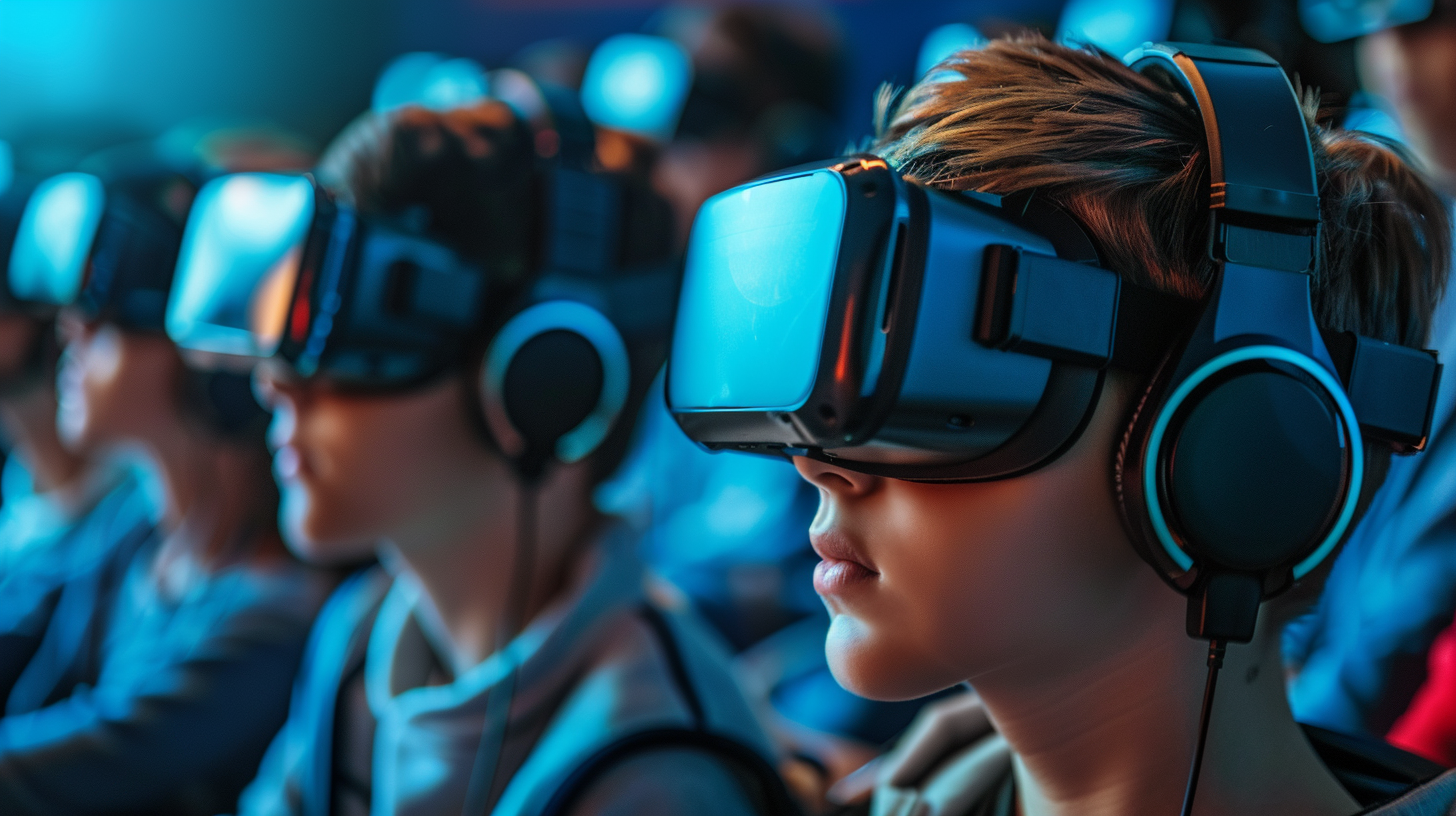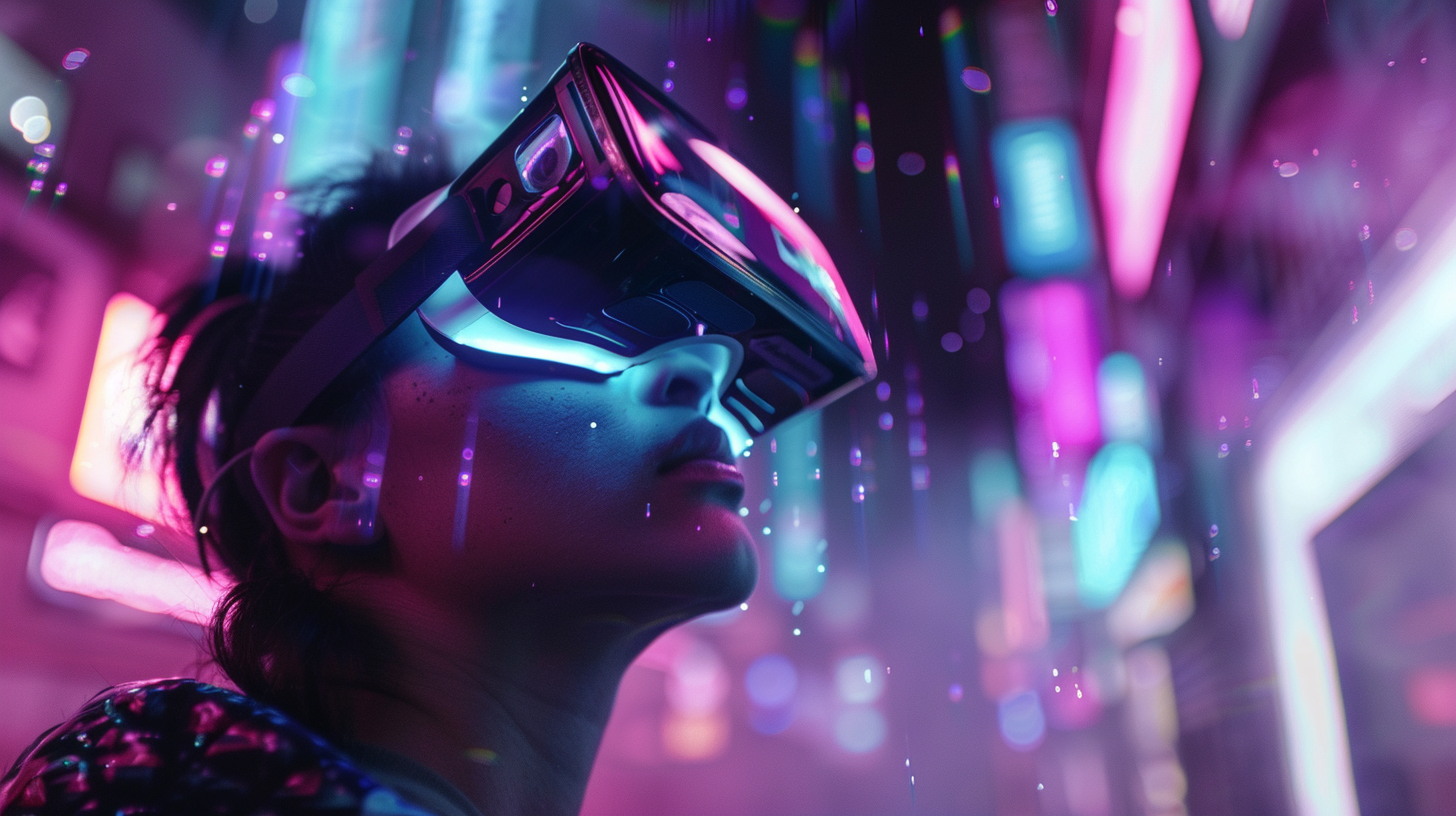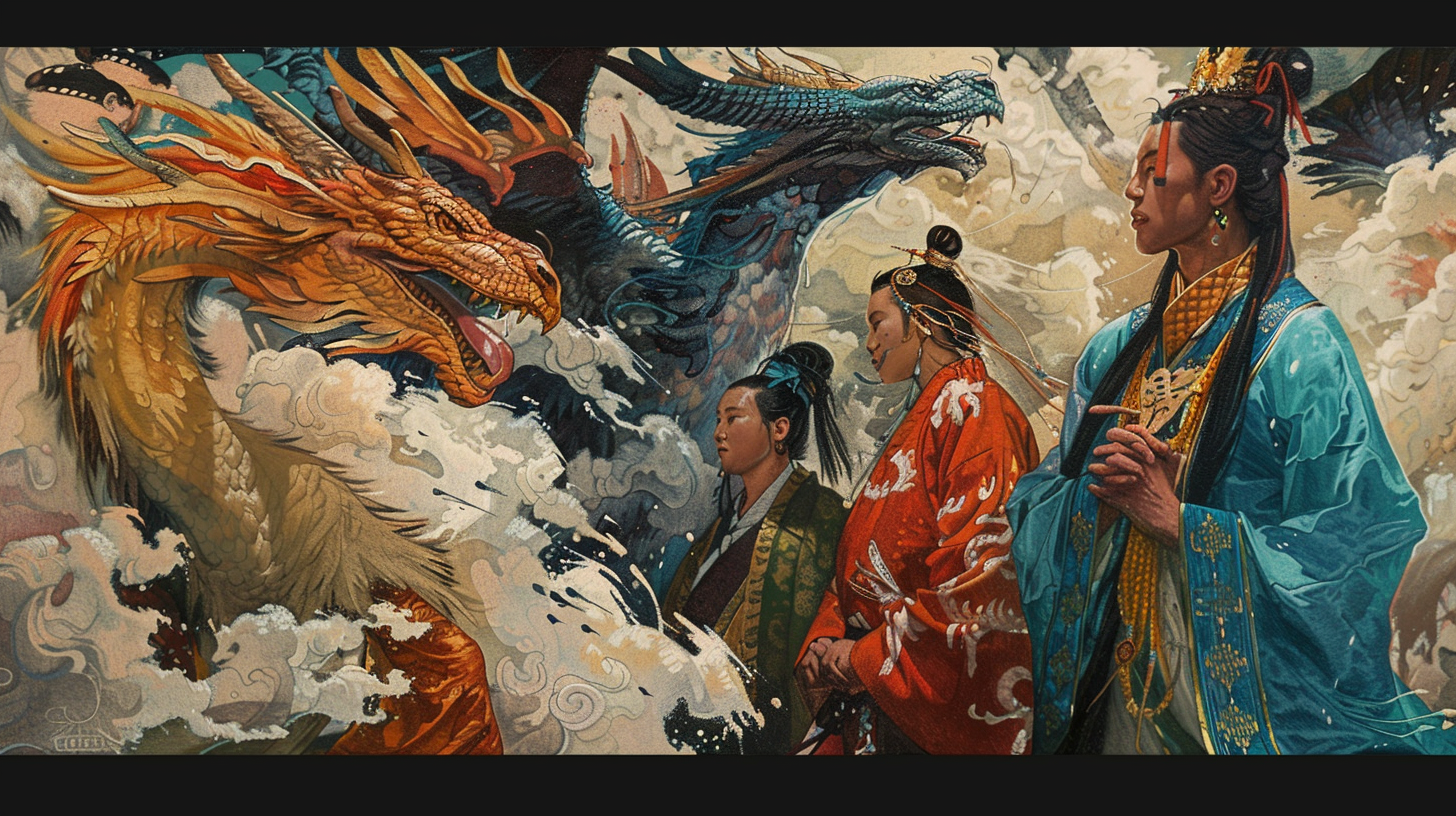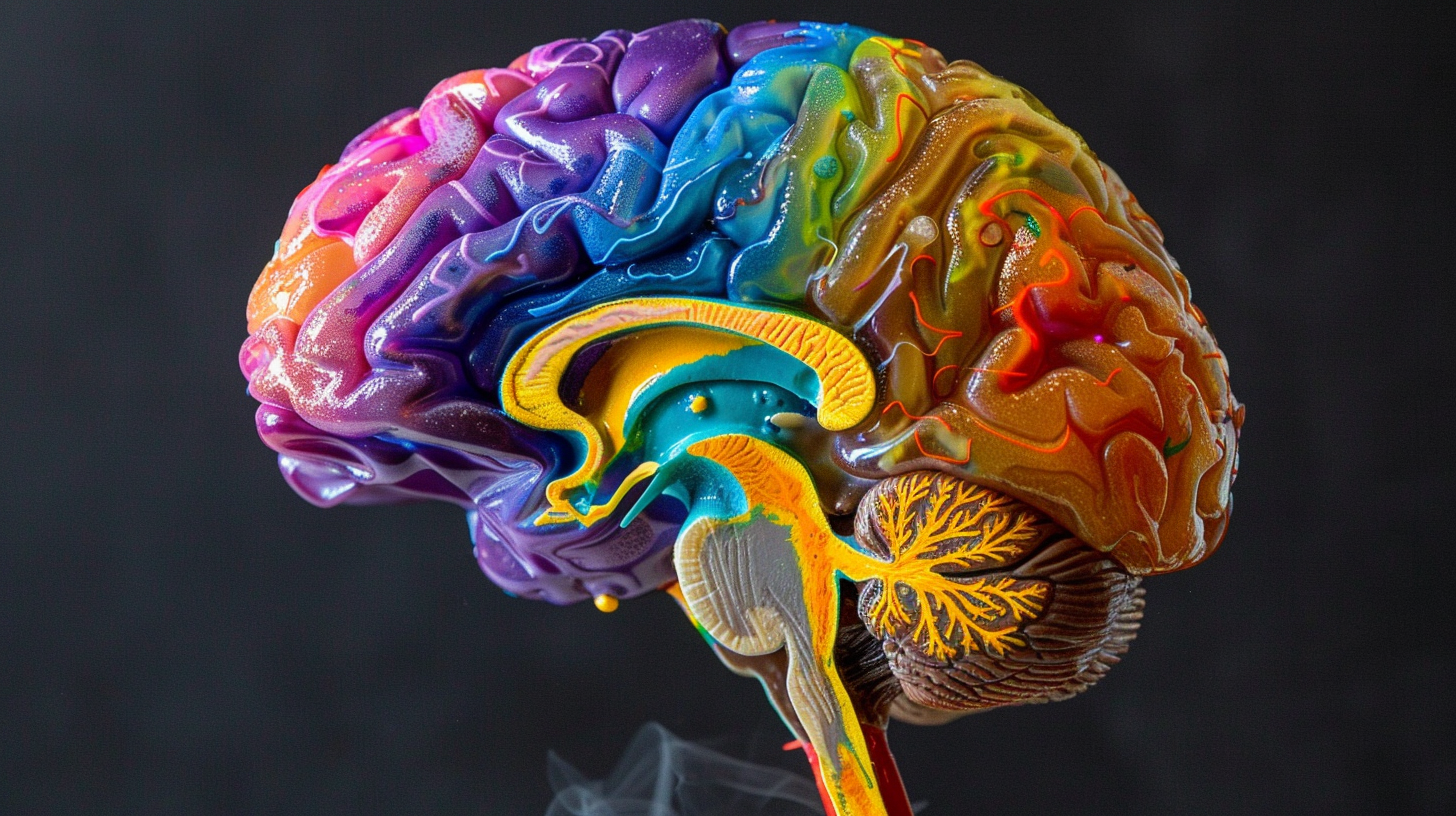Table of Contents Show
Just as the Gutenberg press revolutionized the spread of knowledge, so too does the digital age promise to transform education through blended learning and technology in the classroom. We’re witnessing an unprecedented shift in how we teach and learn, combining traditional teaching methods with digital tools to create a more interactive, personalized learning experience. The advantages of this approach are many, but there are also challenges to overcome. As we explore the potential of blended learning, we’ll uncover how it’s not just about integrating technology, but rethinking the entire educational metamorphosis. The question that remains is, how can we effectively navigate this evolution to maximize its benefits for future generations?
Key Takeaways
- Blended learning enhances education through a mix of traditional and online methods, improving flexibility and engagement.
- Technological tools are pivotal in creating interactive classrooms that cater to diverse learning needs.
- Future education trends include AI, VR, and blockchain, promising personalized and immersive learning experiences.
- Overcoming challenges like the digital divide and teacher training is essential for the successful integration of technology in education.
Defining Blended Learning
Blended learning, a dynamic education model, combines traditional classroom teaching with online instructional methods to enhance the learning experience. We’re embracing a future where freedom in education isn’t just a dream but a practical reality. Through this innovative approach, we’re breaking down the rigid structures of conventional education, offering learners the flexibility they need to thrive.
We’ve found that by integrating online resources, we’re not just supplementing classroom instruction; we’re revolutionizing it. This isn’t about replacing teachers or diminishing the value of face-to-face interaction. Instead, it’s about enriching the educational landscape, making learning more accessible, engaging, and tailored to individual needs.
Imagine a scenario where students can dive deeper into subjects at their own pace, accessing a wealth of resources with a click. At the same time, classroom time becomes more focused on interactive, hands-on learning. This isn’t a distant future scenario; it’s what we’re crafting today through blended learning.
We’re keenly aware that every learner is unique, with distinct styles, strengths, and challenges. Blended learning isn’t just an approach; it’s our commitment to honoring that diversity. It’s about providing choices, encouraging curiosity, and fostering a love of learning that goes beyond the classroom walls.
We’re not just educators; we’re pioneers, seeking to empower our students with the freedom to shape their educational journeys. Blended learning is our tool, and with it, we’re not just teaching; we’re transforming lives.
Historical Context
We’ve seen a dramatic transformation in how we educate, starting with early educational technologies. The shift to digital learning platforms marked a significant turning point, revolutionizing access to information. Now, we’re witnessing the evolution of teaching methods, adapting to the needs of today’s learners.
Early Educational Technologies
Delving into the past, we find that early educational technologies paved the way for the modern blended learning approaches we see today. These nascent tools were the stepping stones to liberating learning from the confines of traditional classrooms.
- Chalkboards: Once a revolutionary tool, allowing for dynamic visual explanations and fostering interactive classroom discussions.
- Printed Textbooks: They democratized access to knowledge, making it possible for students to explore worlds beyond their immediate surroundings.
- Overhead Projectors: These illuminated concepts quite literally, enabling educators to share diagrams and notes with the whole room, making learning a shared experience.
These early technologies laid the groundwork for a future where education is not just about absorbing information but engaging with it, wherever we are.
Shift to Digital Learning
Shifting into the digital age, we’ve witnessed a monumental change in how education is delivered, moving from traditional methods to incorporating digital tools and platforms. This shift hasn’t just changed the tools we use; it’s revolutionized the very fabric of learning, tearing down walls and crossing borders. We’re now embracing a world where information is at our fingertips, making learning more accessible, flexible, and tailored to individual needs. It’s not just about convenience; it’s about breaking free from the one-size-fits-all approach, empowering learners to take charge of their education. This change to digital learning has opened up endless possibilities, challenging us to reimagine the classroom and our roles within it, ensuring that we’re not just keeping up but setting the pace for the future.
Evolution of Teaching Methods
Throughout history, teaching methods have continually evolved, adapting to societal changes and technological advancements. We’ve witnessed a fascinating journey from traditional rote learning to the dynamic, interactive classrooms of today. This evolution mirrors our quest for freedom in learning, empowering students to explore and understand the world around them on their terms.
- Chalk and Talk: Imagine rows of wooden desks, the teacher at the front, chalk in hand, the blackboard filled with notes.
- Overhead Projectors: Visualize transparent slides illuminating the front of the classroom, a leap towards visual learning.
- Digital Classrooms: Picture students and teachers seamlessly interacting through tablets and laptops, a world where information is at our fingertips, and learning knows no bounds.
We’re not just passively receiving information; we’re engaging, questioning, and shaping our learning journeys.
Advantages of Blended Learning
As we explore the advantages of blended learning, it’s clear that enhanced learning flexibility and improved student engagement stand out. We’ve seen how this approach allows students to learn at their own pace, blending in-person and online instruction effectively. It’s exciting to ponder how these benefits can transform educational experiences for learners worldwide.
Enhanced Learning Flexibility
One of the standout advantages of blended learning is its ability to ramp up learning flexibility, allowing students to tailor their educational experiences to fit their individual schedules and learning styles. This freedom is invaluable in today’s fast-paced world, where traditional educational models can feel restrictive.
- Anytime, Anywhere Learning: Imagine being able to access your coursework from a cozy café or during a quiet morning at home.
- Self-paced Advancement: Students can breeze through familiar topics or spend extra time where needed, without waiting for the rest of the class to catch up.
- Customized Learning Paths: We’re able to mix digital tools and face-to-face interaction to create a personalized learning journey, catering to each student’s strengths and interests.
This flexibility is the cornerstone of a more accessible, efficient, and personalized educational experience.
Improved Student Engagement
Many educators agree that blended learning greatly boosts student engagement by offering a mix of online and in-person educational experiences. We’ve found that students love the freedom to explore topics at their own pace online, while still having the support of face-to-face interactions. It’s a win-win that keeps everyone more involved and enthusiastic to learn.
| Engagement Type | Online | In-Person |
|---|---|---|
| Pace | Self-guided | Structured |
| Interaction | Digital forums | Direct conversations |
| Resources | Unlimited | Hands-on |
This approach allows us to cater to diverse learning styles, making education more accessible and enjoyable for all. It’s clear that blended learning isn’t just a trend; it’s the future, offering the freedom to learn in ways that suit every student.
Technological Tools in Education
In today’s classrooms, we’re seeing an unprecedented integration of technological tools that are reshaping how students learn and interact with their curriculum. This transformative shift isn’t just about replacing traditional methods; it’s about enhancing the learning experience in ways that were once unimaginable, offering students the freedom to explore, create, and engage with material on a whole new level.
Consider the following technological tools that have become integral to modern education:
-
Interactive Whiteboards: These boards have transformed the front of the classroom into an interactive hub where lessons come to life. Imagine students touching the board to drag and drop mathematical concepts into place or dissecting a virtual frog with a swipe of their finger. The possibilities are endless, and the engagement is palpable.
-
Learning Management Systems (LMS): Platforms like Canvas and Blackboard have revolutionized how assignments are distributed, completed, and graded. No longer confined to the physical classroom, students can access their work, receive instant feedback, and engage in discussions from anywhere, at any time. This flexibility empowers them to take control of their learning journey.
-
Educational Apps and Games: By integrating subject matter into games and interactive apps, we’re making learning irresistibly fun. From mastering a new language through immersive simulation games to solving complex math puzzles, these tools make learning an adventure that students want to start on.
We’re not just teaching with technology; we’re inviting our students to step into a world where their education is boundless. By embracing these tools, we’re not only enhancing their learning experience but also preparing them for a future where digital literacy is paramount.
Implementing Blended Learning
Building on the foundation of technological tools in education, we’re now exploring how blended learning can further enrich the student experience. By integrating online educational resources with traditional classroom methods, we’re not just teaching; we’re empowering. This approach allows us to tailor learning experiences to individual needs, providing the freedom for students to learn at their own pace, in their own way.
We’re diving into blended learning with a clear plan. First, we identify the digital tools that complement our teaching goals. Whether it’s interactive software, video content, or online collaboration platforms, we’re selecting resources that spark curiosity and encourage active learning. Next, we’re redesigning our curriculum to make room for these digital experiences, ensuring they align with our educational standards and objectives.
Training is essential. We’re investing time in helping our educators become proficient with these tools and techniques. It’s about more than just knowing how to use the technology; it’s about understanding how to integrate it seamlessly into lessons to enhance learning outcomes.
Finally, we’re fostering an environment of continuous feedback. By engaging with students and parents, we’re fine-tuning our approach to meet the evolving needs of our learners. We’re not just implementing a new teaching method; we’re creating a dynamic learning ecosystem that adapts, evolves, and grows.
In embracing blended learning, we’re breaking down the walls of the traditional classroom. We’re offering a pathway to knowledge that is as diverse as our students themselves, promoting a sense of ownership over their learning journey. This is how we’re shaping the future of education, one blended lesson at a time.
Challenges and Solutions
While we champion blended learning’s potential, we’re also confronting its challenges head-on, seeking innovative solutions to ensure every student benefits. The shift to this model hasn’t been smooth, revealing gaps we’re determined to bridge. Our freedom to innovate in education is what will ultimately make the difference.
Here are the main hurdles we’ve identified, along with our strategies for overcoming them:
-
Digital Divide: Not all students have equal access to technology, which can widen the gap between different socio-economic groups. We’re tackling this by partnering with local communities and businesses to provide devices and reliable internet access to those in need. It’s about leveling the playing field so every student has a fair shot at success.
-
Teacher Training: Blended learning requires a change in teaching methods, which can be challenging for educators accustomed to traditional approaches. We’re rolling out extensive training programs, empowering teachers with the skills and confidence to navigate new technologies and pedagogical strategies. Freedom in teaching methods allows educators to tailor their approaches to fit their students’ unique learning needs.
-
Engagement and Motivation: Keeping students engaged in a blended environment can be challenging. We’re leveraging gamified learning and interactive tools to make education not just informative, but exciting. By giving students the freedom to explore subjects in ways that resonate with them, we’re fostering a deeper, more meaningful connection to their education.
We’re not just facing these challenges; we’re turning them into opportunities to innovate and improve. The future of education is bright, and we’re leading the charge towards a more inclusive, effective, and engaging learning environment for all.
Case Studies: Success Stories
Having outlined the challenges we face with blended learning, let’s now celebrate the victories by exploring several case studies where these strategies have led to remarkable success stories. These examples not only show us what’s possible but also fuel our passion for transforming education.
First up, we’ve got a high school in Oregon that embraced a blended learning model to cater to diverse learning needs. By integrating digital content with traditional teaching, they saw a significant rise in student engagement and test scores. It’s a confirmation of how customized learning paths can empower students to take charge of their education.
Then there’s the story of a rural school district in North Carolina that was struggling with limited resources. They turned to blended learning as a solution, using online resources to supplement in-class instruction. The result? Improved academic performance and a newfound excitement for learning among students. This case illustrates that freedom in education isn’t just about physical resources; it’s about making the most of what we have through innovation.
Finally, we celebrate a community college in California that implemented blended learning to support adult learners. By offering flexible online modules alongside in-person workshops, they’ve managed to increase completion rates dramatically. This success highlights the power of blended learning to provide second chances and open doors to those who thought it was too late.
These stories aren’t just heartwarming; they’re proof that when we’re free to innovate and adapt, the possibilities for education are boundless.
Preparing Teachers for Change
To effectively navigate the evolving landscape of education, it’s important we prepare teachers for the inevitable changes that blended learning and technology bring. Embracing this new era doesn’t mean losing the essence of traditional teaching; rather, it’s about enhancing it to free up more space for creativity, critical thinking, and personalized learning experiences. We’re not just talking about integrating new gadgets and platforms into the classroom; it’s about fostering a mindset that’s open to continuous learning and adaptation.
Here’s how we can start:
-
Thorough Training Programs: We must equip our educators with the skills and knowledge to seamlessly integrate technology into their teaching. Imagine workshops and online courses that not only cover the technical aspects but also focus on innovative teaching methodologies.
-
Ongoing Support Networks: Let’s create communities where teachers can share insights, challenges, and successes. Picture online forums, regular meet-ups, and mentorship programs that encourage collaboration and mutual support.
-
Flexibility and Freedom in Curriculum Design: Give teachers the liberty to experiment with content and teaching techniques. Envision a curriculum that’s not a tightrope but a wide path, offering room to maneuver and adapt to the needs of their students and the demands of a digital age.
Future Trends in Education Technology
As we explore the future trends in education technology, it is important to acknowledge the transformative potential these advancements hold for teaching and learning processes. We’re entering an era where our classrooms will no longer be confined to four walls. Instead, they’ll expand into the digital domain, offering learners the freedom to explore knowledge from anywhere in the world.
We’re seeing the rise of artificial intelligence (AI) and machine learning, which promise to personalize learning experiences like never before. Imagine a system that adapts to each student’s pace, tailoring lessons to fit their unique needs and learning styles. This isn’t just a dream—it’s quickly becoming a reality.
Virtual reality (VR) and augmented reality (AR) are set to revolutionize how we comprehend complex subjects. These technologies can transport students to ancient civilizations, take them inside the human body, or allow them to walk on other planets, all from the safety of their classroom or home. The boundaries of learning are expanding, offering unparalleled freedom to explore and discover.
Furthermore, blockchain technology is poised to make educational resources more accessible while ensuring the integrity of academic credentials. This means smoother changes between different educational institutions and the workplace, empowering students to take control of their educational journeys.
As we embrace these trends, it’s clear that the future of education is about freedom—freedom to learn in ways that suit us best, freedom to access information from anywhere, and freedom to chart our own educational paths. Let’s unleash the full potential of these technologies and redefine what it means to learn.
Conclusion
We’ve journeyed from chalkboards to smartboards, textbooks to tablets, illustrating the dynamic evolution of education. Embracing blended learning, we’re marrying the traditional with the digital, crafting classrooms that are both familiar and futuristic. Overcoming challenges, we’ve spotlighted success stories, proving resilience and innovation. As we prepare teachers for tomorrow, we’re not just following trends; we’re setting them. The future of education isn’t just about integrating technology—it’s about reimagining learning, making it more accessible, engaging, and effective for all.








